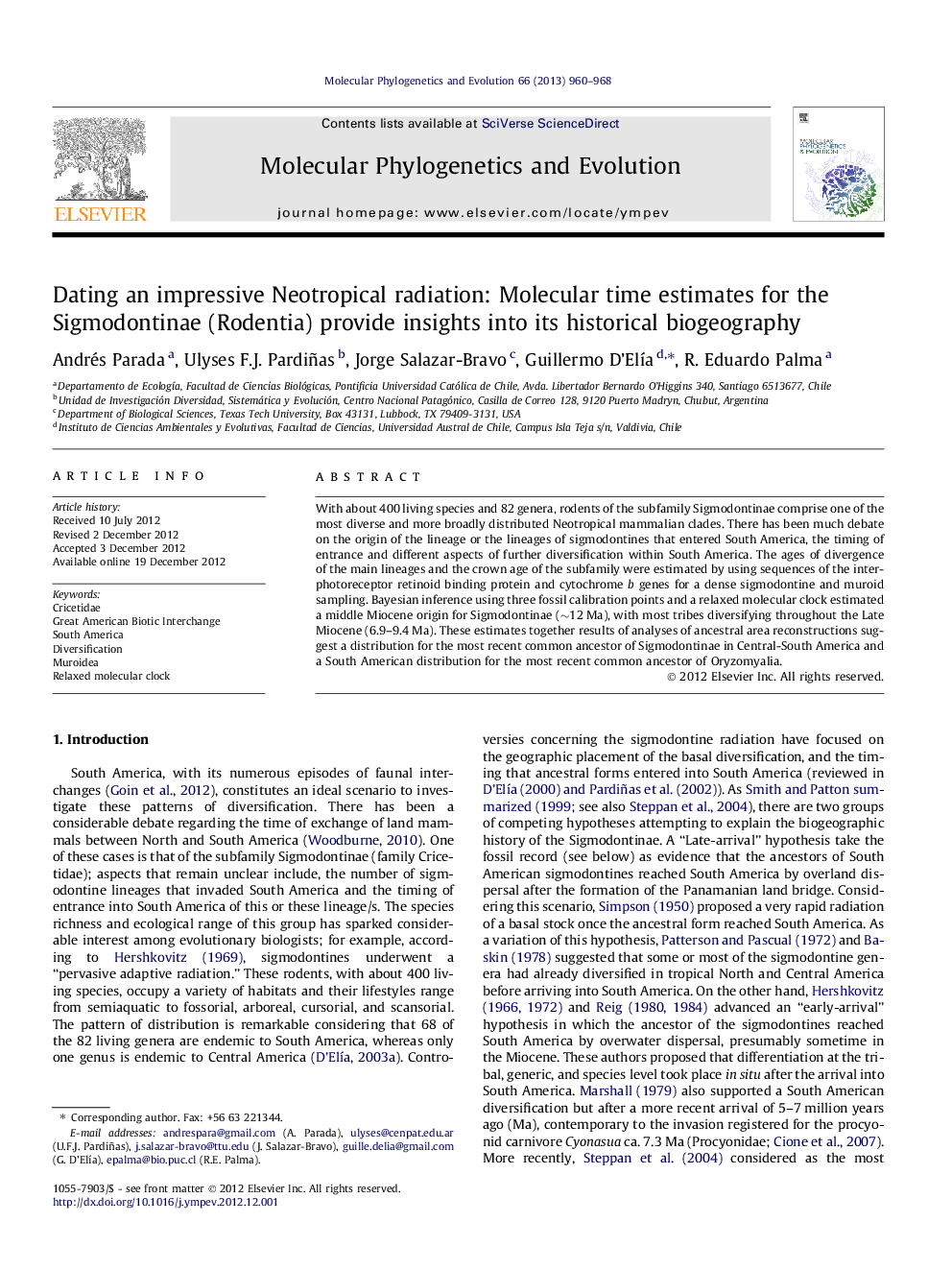| Article ID | Journal | Published Year | Pages | File Type |
|---|---|---|---|---|
| 2833965 | Molecular Phylogenetics and Evolution | 2013 | 9 Pages |
With about 400 living species and 82 genera, rodents of the subfamily Sigmodontinae comprise one of the most diverse and more broadly distributed Neotropical mammalian clades. There has been much debate on the origin of the lineage or the lineages of sigmodontines that entered South America, the timing of entrance and different aspects of further diversification within South America. The ages of divergence of the main lineages and the crown age of the subfamily were estimated by using sequences of the interphotoreceptor retinoid binding protein and cytochrome b genes for a dense sigmodontine and muroid sampling. Bayesian inference using three fossil calibration points and a relaxed molecular clock estimated a middle Miocene origin for Sigmodontinae (∼12 Ma), with most tribes diversifying throughout the Late Miocene (6.9–9.4 Ma). These estimates together results of analyses of ancestral area reconstructions suggest a distribution for the most recent common ancestor of Sigmodontinae in Central-South America and a South American distribution for the most recent common ancestor of Oryzomyalia.
Graphical abstract.Figure optionsDownload full-size imageDownload as PowerPoint slideHighlights► Cladogenetic events of the Neotropical rodent subfamily Sigmodontinae were dated. ► Relaxed molecular clock suggests a mid Miocene origin of the subfamily (∼12 Ma). ► Sigmodontine tribes began to diversify throughout the Late Miocene and Pliocene. ► Analyses infer an early arrival of sigmodontine into South America.
